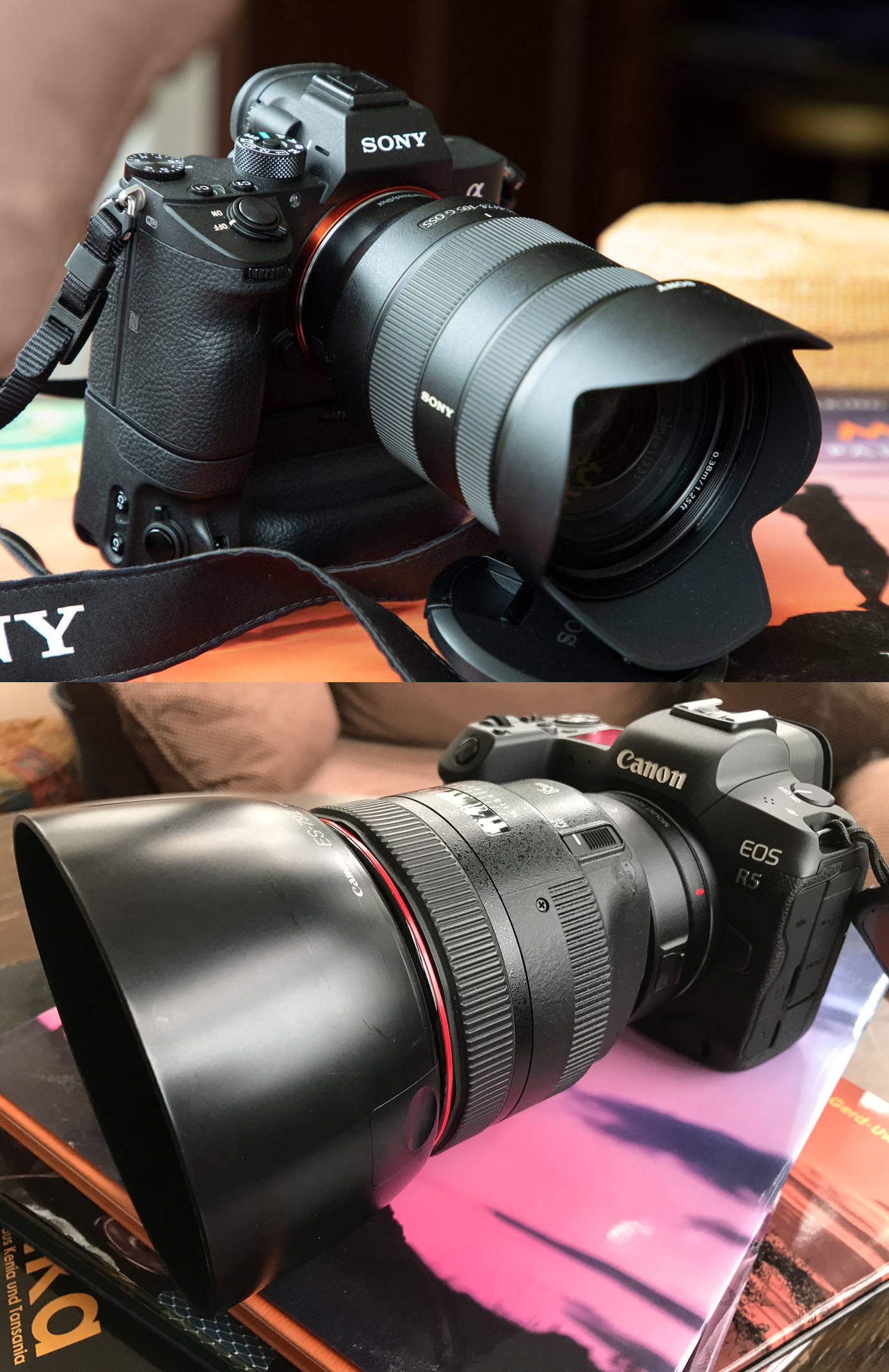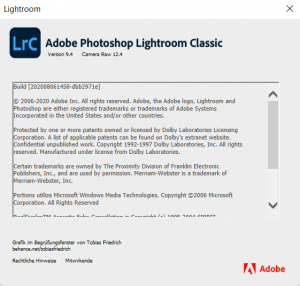Since with the release of the Canon EOS R5 there is often a system comparison with the Sony Alpha 7R, which is already available in 4th generation. Therefore I would like to briefly describe my experiences here, since I have now worked with both systems.
Since 2003 I have been taking pictures with digital SLR cameras from Canon. I have also been using the Sony Alphas 7R in generations from I to III since 2014, but they were always just additional bodies that I used with my Canon lenses via adapters. This finally worked quite well with the 7R III, so that I seriously thought about switching systems. I own the Canon EOS R5 only for about 2 weeks now.
As a long-time Canon user, how did I even come to Sony? Well, I wanted to have a mirrorless system camera.
Why mirrorless at all?
As an admitting technology geek, computer nerd and enthusiastic photographer for more than 40 years now, I have already gone through the great transformation from analog work with film (small and medium format) including my own color photo lab to digital photography. My digital era started in 2003 with the Canon EOS 300D, followed by the 20D, 5D, 5D MkII, 1DS Mk II, 5D Mk III, 7D, 7D Mk II and finally the 5DS R. However, at that time, only the technique of image storage has changed, the old SLR principle was adopted 1:1 by the analog cameras. The cameras looked exactly the same as before - which was a big advantage in the beginning.
But in the end it seemed to me as a logical next step to abandon the remaining conventional analog viewfinder technology with its complicated and failure-prone flipping mirror system and to display the sensor image directly in a digital viewfinder. This would really allow you to see the finished image directly when you take the picture. With computer programs, the principle is called “WYSIWYG - What You See Is What You Get”. However, this has long failed due to the low readout speed of the sensors and the small high-resolution displays required.
The first steps were the live-view displays on the rear monitor - very low resolution, hardly usable in sunlight and unergonomic. In addition, the contrast autofocus used at the beginning was grotesquely slow - but then always accurate.
My first camera that supported live-view was the Canon EOS 5D Mk II - I even added a viewfinder magnifier that could be attached to the back of the camera, but that was just a crutch.
My time with Sony
Over time, however, the technology of sensors and displays developed further, making usable mirrorless system cameras possible. The first models were already developed in 2008 by Panasonic and Olympus for the Micro-FourThirds format (MFT). Since Canon did not make any efforts to develop competitive mirrorless systems, I bought in 2014, in addition to my 5D Mk III, the then new Sony Alpha 7R with a significantly increased sensor resolution of 36 megapixels compared to Canon. A crucial point for me was the fact, that the 7R allowed me to continue using my Canon EF lenses via adapters.
Sony Alpha 7R
The camera already had an electronic OLED viewfinder with XGA resolution (2.4M subpixels) at that time, which was already quite useful. Since I already had many Canon lenses, the camera was only meant to be a supplement, so I only bought a corresponding FE-EF adapter in addition to the included kit zoom 28-70mm.
Operating the Sony a7R took a lot of getting used to. The menu control was confusing, the camera seemed edgy and unergonomic. One could see, that Sony is primarily an electronics company. The Alpha 7R somehow always felt like an electronic toy. With Canon cameras, on the other hand, you had the feeling of holding a real “camera” in your hands. Annoying, also with the following models, was the long boot time, the camera needed almost 2 seconds after switching on until the first picture could be taken.
The contrast AF was very “leisurely” even with the native kit zoom, but always accurate. On Canon lenses, the AF worked, but also very slowly. The image quality, however, was excellent. Especially fun was the use of my 17mm TS-E, as I could now directly see the effect of an adjustment in the viewfinder. With the Canon 5D, even slight shift movements caused massive vignetting, so that even Canon recommended the use of the Liveview. Since then I have used the TS-E exclusively on my Sonys!
Nevertheless, I still used my Canon cameras most of the time. In October 2015, I finally exchanged my EOS 5D Mk III for a 5DS R, which offered even a higher sensor resolution than the Sony a7R and which I still like to use today.
Sony Alpha 7R II
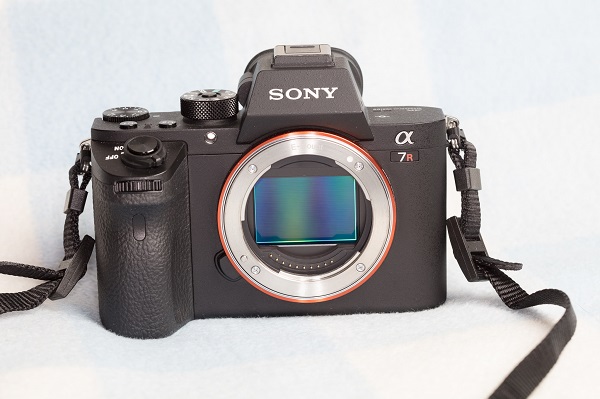
In 2017, I replaced my 7R with a 7R II. Besides the slight increase of the sensor resolution to 42 megapixels, it was the first camera with a movable sensor (the first IBIS for full format cameras!), so that all my lenses were stabilized. Thanks to Metabone’s Adapter IV, this worked perfectly with my 100mm macro, the 85mm f/1.2L, the 50mm f/1.4, the 40mm f/2.8 and also with the 17mm f/4L TS-E.
In addition, due to 399 phase contrast autofocus points integrated in the sensor, the autofocus was now well usable and quite fast. Another nice feature was the high-ISO capability of the backlit sensor which compensated well for the corresponding deficit of my Canon 5DS R. By the way, I could now film in 4K with the 7R II - but I hardly ever did that 😉 . Unfortunately, the menu system remained confusing.
Sony Alpha 7R III
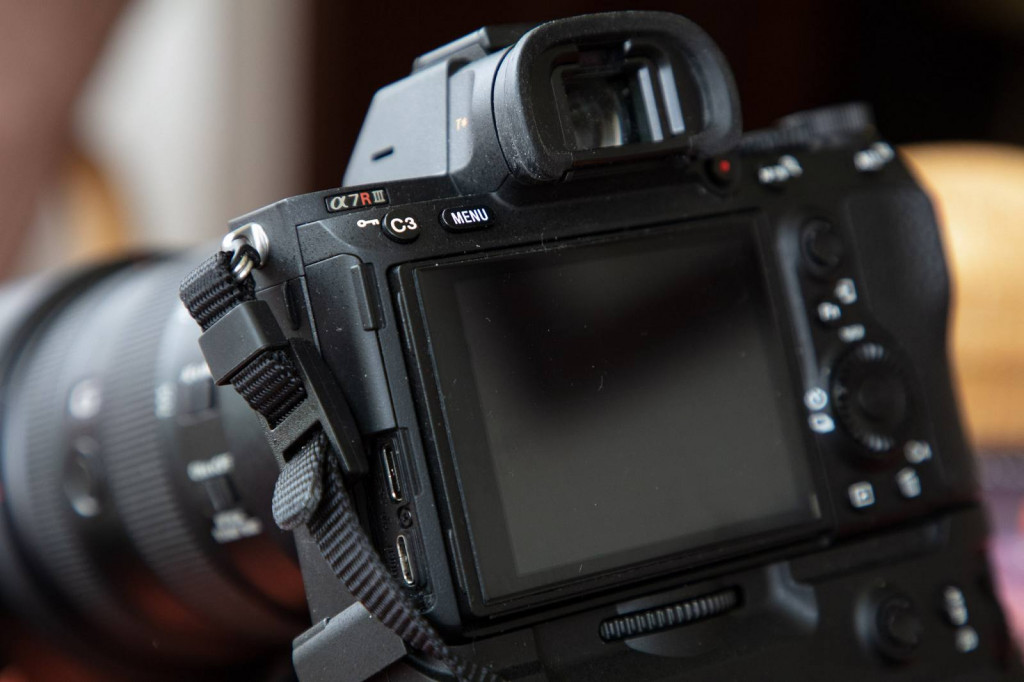
After less than 1 year I replaced the 7R II with a 7R III in 2018. This one had the same 42 megapixel sensor, but became a little more a “camera”. There was now a rear joystick, 2 memory card slots (one of them UHS-II capable), a bigger and longer lasting battery, higher resolutions of viewfinder and display and the camera became faster overall. With the electronic shutter, it achieved an impressive burst rate of 10 frames per second with continuous AF. A new eye AF was also introduced, which after an update also recognized animal eyes (dogs and cats), but the AF mode had to be changed for that. With my Sigma 150-600mm and later 60-600mm zoom lenses and the Sigma MC-11 adapter, the autofocus was fast and very useful for wildlife photography in Africa. Some picture examples can be found in my picture gallery and in my report from our safari in the Masai Mara 2018/2019. The menu system was slightly improved, at least there was now the possibility to use a custom menu.
All in all a step in the right direction. In addition to the camera, I also got the native 24-105G f/4 standard zoom, which was much better than my EF 24-105G f/4L IS II USM - it has been sitting in the cabinet unused ever since.
More information about the Sony Alpha 7R III can also be found in my short field report and addendum.
Overall, the camera was now quite usable - as I said, a little more “camera” and less toy. In the beginning, some lenses were missing in the Sony system, especially an equivalent to my popular EF 400 f/2.8L IS II USM was absent and this worked only very unsatisfactorily on the Sony. When in summer 2018 a corresponding counterpart from Sony was introduced, I seriously thought about a switching to Sony. I was already close to replacing my 7R III with a 7R IV when Canon announced the EOS R5 and leaked its first features.
Canon EOS R5
Finally, Canon seemed to be able to bring out a competitive mirrorless system camera. I never seriously considered using the previously available RF cameras R and RP, as I felt that they lagged far behind the Sony cameras both technically and in terms of image quality. This seemed to be changing with the Canon EOS R5. Canon leaked more and more information peu-a-peu and the camera seemed more and more interesting to me.
When finally on July 9th, 2020 (due to Corona online) at the Canon Event the curtain was lifted and the camera was presented in detail, I spontaneously took the decision: The presentation of the camera started at 2:00 pm MEZ and I received the order confirmation of my online photo dealer already at 2:16 pm. My Sony equipment then quickly went into new hands via eBay.
Despite my early order, the demand for the R5 was so high that I was only included in the second delivery date. Since August 12th, I have it now.
Except for the sensor resolution (45 vs 61 megapixel), the EOS R5 matches or exceeds the features of the Sony Alpha 7R IV in every respect. I was especially impressed by the progress in autofocus and the incredible speed of the camera. I can now use my existing lenses via the Canon EF-R Mount Adapter* without any restrictions. Furthermore, I always like to have a second body available and can continue to use my existing 5DS-R.
Comparison of Sony Alpha 7R III vs Canon EOS R5
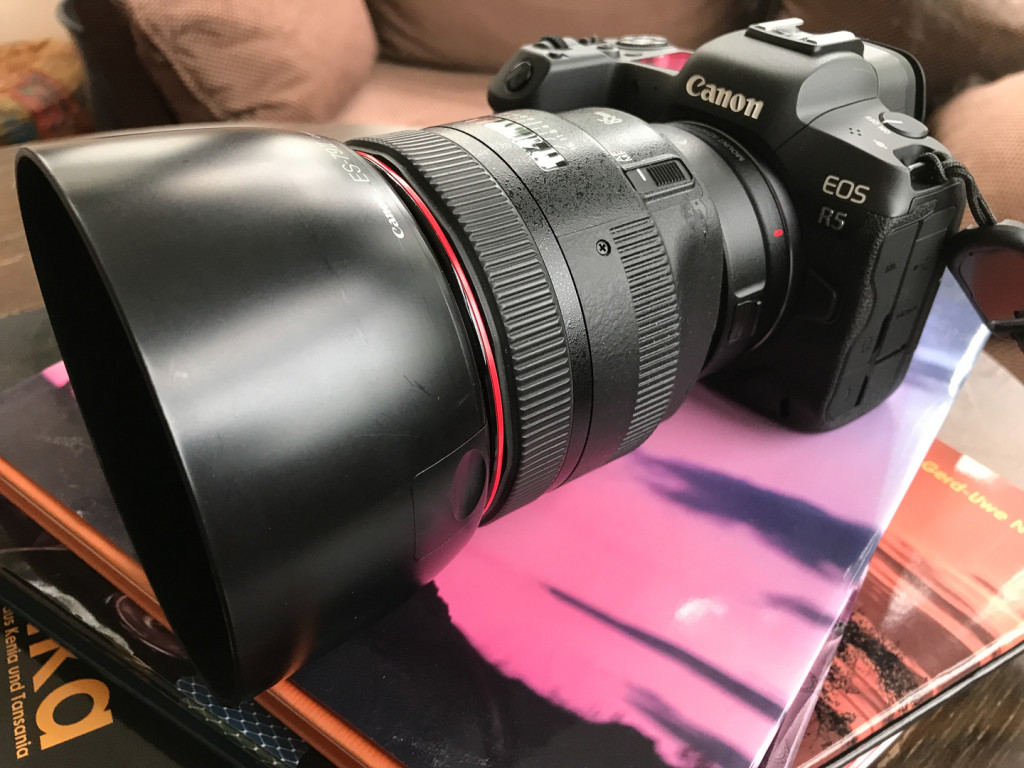
So, now I already have had my first experiences with the R5. What do I miss from my Sonys?
In short: simply nothing!
However, I can only compare with the Sony Alpha 7R III, I only know about the current 7R IV from test reports and videos. The Alpha a9II certainly has an excellent autofocus and is lightning fast, but its sensor resolution of 24 megepixels is far too low for me at the present time, so it never came into consideration for me. And, I should also mention, that I have used the Sonys except for the FE 24-105 only with adapted lenses.
The EOS R5 is a Canon all over, a “camera”. For me as a long-time Canon user, the controls are just in the perfectly right position. It fits perfectly in the hand. Finally, the camera is instantly available after switching it on, I no longer have the feeling that it might still be busy booting at the crucial moment. For the first time, the view through the viewfinder is such that I do not miss an SLR viewfinder. At low brightness, it is even superior to a SLR viewfinder, because it is much brighter.
Compared to the Sony 7R III, the OLED resolution of the R5 is higher (the 7R IV probably has the same resolution) and, what is especially pleasing, the viewfinder image is much less noisy in the dark. When set to 120Hz, the image impression is fluid, so that object tracking works well e.g. with running or flying animals. With the electronic shutter at 20 fps, there is no blackout. Clear point for the R5.
All of my Canon lenses work at least as fast on the EF-R mount converter as on the 5DS R. Working with my 400mm f/2.8L IS II is great thanks to the autofocus area now covering the entire viewfinder image. My now additionally purchased RF 24-105 f/4L is even much faster, even faster than the comparable FE 24-105 on the Sony. Also my Sigma 60-600 works better on the R5 than on the Sony, although it was there supported natively with the Sigma MC-11 adapter. Especially pleasing is the size of the AF area of the R5 and the high number of focus points. Another clear point for the R5.
The eye autofocus of the R5 is superior to that of the 7R III by orders of magnitude. It also recognizes the eyes of birds. It even identifies the eyes of flamingoes and the black eyes of a crow. There are already some videos on the net, which prove, that it even recognizes the eyes of fish.
Some information about my settings and more pictures are also available in my first experience report about the EOS R5. I tested this in my garden with birds and it worked fine. Once found, with the appropriate setting, the autofocus point sticks to the eye even when panning and even at 20 fps in continuous shooting mode. In addition, you don’t have to switch manually from person to animal mode, as is required with the Sony a7R III, the R5 always recognizes both, but you can choose whether the priority should be on people or animals. Another point for the R5.
The resulting quality of the pictures was excellent. In fact, I have the impression, that the R5 even surpasses the 5DS R in resolution, despite the 5 megapixels that are nominally missing. I don’t know if this is due to the fact, that the 5DS R is not always 100% accurate in focusing via the separate phase contrast AF or because of the minimal vibration caused by the flipping mirror. When I saw the first images of the R5, I was very impressed by the sharpness. But the new Sony 7R IV will not be worse, the 7R III also had a very good image quality already, so I see a tie here.
For the first time with Canon system cameras, the R5 has a stabilized sensor, which Sony has been using since the 7R II. According to the technical data, the R5 should compensate up to 8 f-stops, the Sony 7R IV reaches only 5.5 stops. I can’t check this exactly, but the stabilization feels indeed better. In a short test with my RF 24-105, I managed to take sharp pictures with 1 to 2 seconds exposure time, this would certainly not have been possible with the Sony 7R III. But all in all this is only the category “hearsay” and without any rating 😉 .
Résumé
On the whole, I’m completely satisfied with the Canon EOS R5. Finally, I now have a mirrorless system camera, that perfectly integrates into my existing extensive Canon system without any compromises.
Would I switch to Canon if I had a complete Sony Alpha system?
Probably not, also the current cameras from Sony are very good and the current status is also only a snapshot. As I know Sony, they will surely catch up quickly and the measure of all things is at the moment the Canon EOS R5.
And newcomers?
On the other hand, if I were a newcomer, my current choice would clearly be the Canon EOS R5. It offers the advantages of a Sony a9 II and a7R IV in one body - it even surpasses this combination in some points. In addition, the resolution of the sensor of the a9II would no longer be sufficient for me today. The ergonomics of the R5 demonstrates Canon’s decades of experience in camera development. The menu is intuitive. The camera fits perfectly in the hand. Compared to Sony, the number of available RF lenses is still small, although there are some pearls in the mix. On the other hand, the existing Canon EF lenses work as native lenses and there the selection, even of exotic specimens like TS-E or MP-E, is unsurpassed. Furthermore, there is also a good second-hand market.
But this is my opinion as a long-time Canon user, I would appreciate any comments.
* = Affiliatelink

